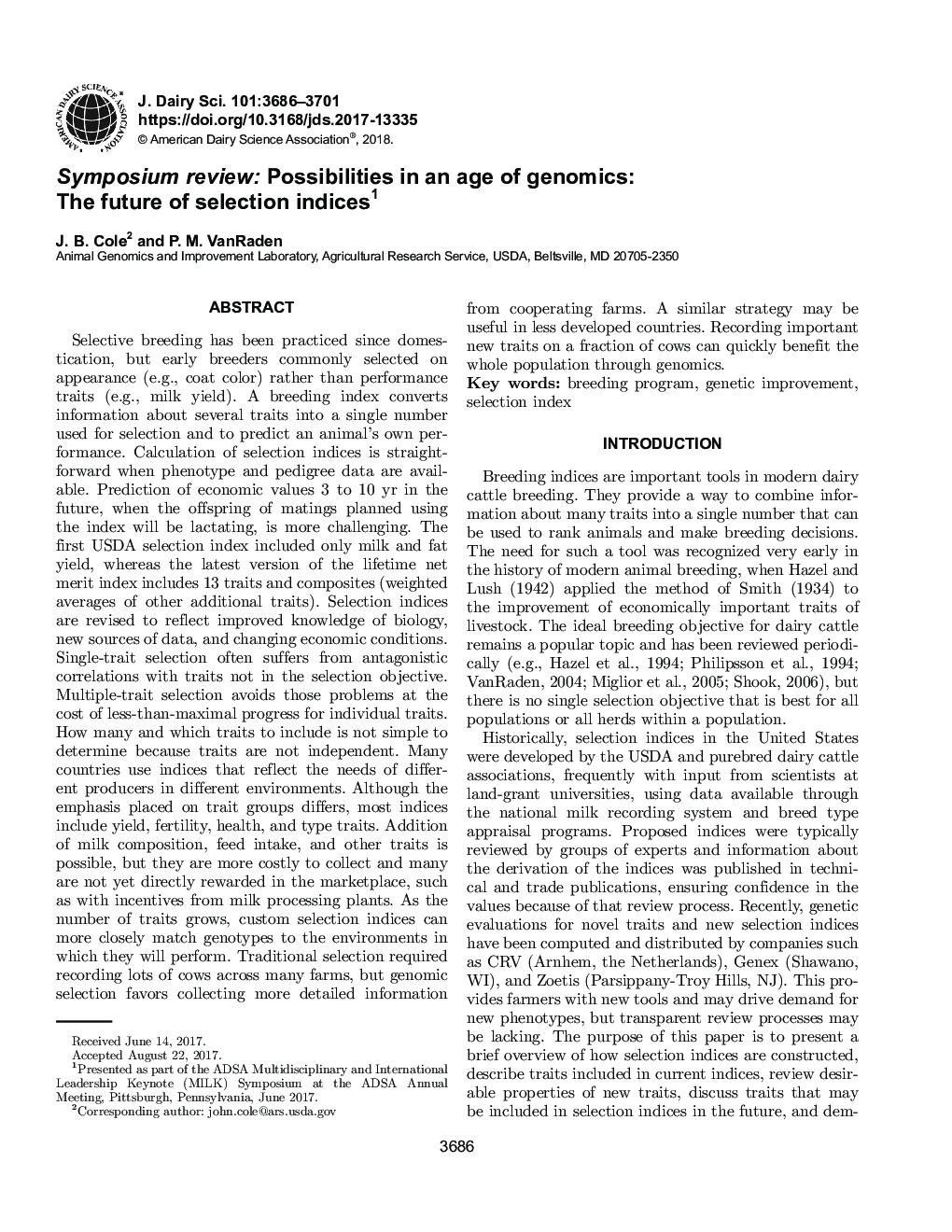| Article ID | Journal | Published Year | Pages | File Type |
|---|---|---|---|---|
| 8501540 | Journal of Dairy Science | 2018 | 16 Pages |
Abstract
Selective breeding has been practiced since domestication, but early breeders commonly selected on appearance (e.g., coat color) rather than performance traits (e.g., milk yield). A breeding index converts information about several traits into a single number used for selection and to predict an animal's own performance. Calculation of selection indices is straightforward when phenotype and pedigree data are available. Prediction of economic values 3 to 10 yr in the future, when the offspring of matings planned using the index will be lactating, is more challenging. The first USDA selection index included only milk and fat yield, whereas the latest version of the lifetime net merit index includes 13 traits and composites (weighted averages of other additional traits). Selection indices are revised to reflect improved knowledge of biology, new sources of data, and changing economic conditions. Single-trait selection often suffers from antagonistic correlations with traits not in the selection objective. Multiple-trait selection avoids those problems at the cost of less-than-maximal progress for individual traits. How many and which traits to include is not simple to determine because traits are not independent. Many countries use indices that reflect the needs of different producers in different environments. Although the emphasis placed on trait groups differs, most indices include yield, fertility, health, and type traits. Addition of milk composition, feed intake, and other traits is possible, but they are more costly to collect and many are not yet directly rewarded in the marketplace, such as with incentives from milk processing plants. As the number of traits grows, custom selection indices can more closely match genotypes to the environments in which they will perform. Traditional selection required recording lots of cows across many farms, but genomic selection favors collecting more detailed information from cooperating farms. A similar strategy may be useful in less developed countries. Recording important new traits on a fraction of cows can quickly benefit the whole population through genomics.
Related Topics
Life Sciences
Agricultural and Biological Sciences
Animal Science and Zoology
Authors
J.B. Cole, P.M. VanRaden,
